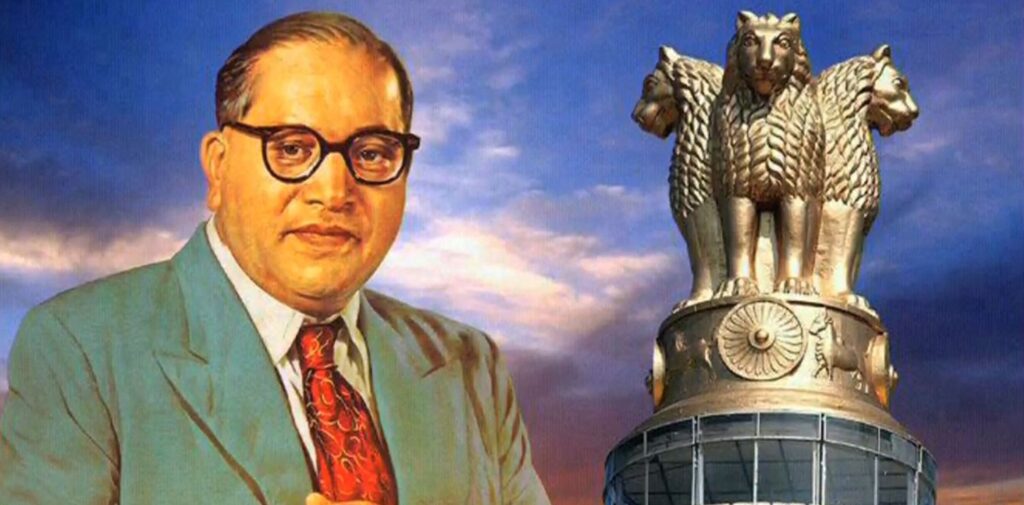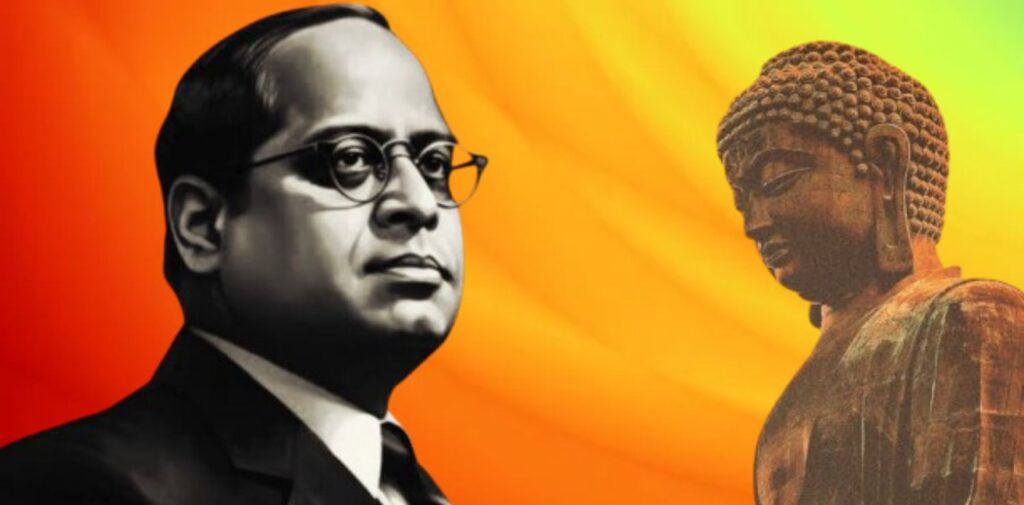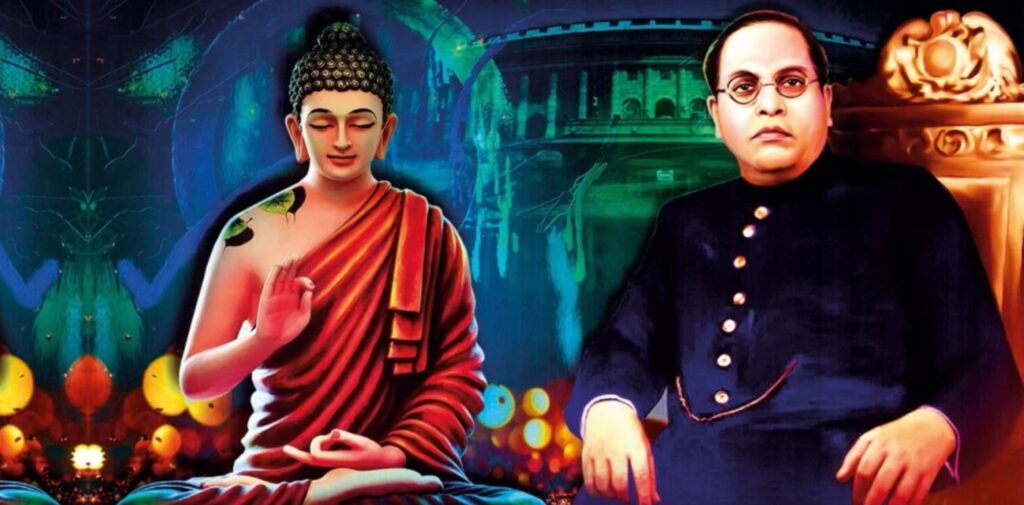Dr. Bhimrao Ramji Ambedkar, a social reformer, politician, and the chief architect of the Indian Constitution, played a pivotal role in the upliftment of marginalized communities in India. His conversion to Buddhism in 1956, along with over 3.5 lakh followers, was a historic move that symbolized his rejection of the oppressive social order propagated by Hinduism. But why did Ambedkar, after years of struggle against the caste system within Hinduism, finally decide to embrace Buddhism? Here, we explore the reasons behind his momentous decision.
The Disillusionment with Hinduism: Dr. B.R. Ambedkar
Ambedkar’s decision to leave Hinduism was not sudden. It was a result of years of disillusionment and bitter experiences. Hinduism, with its deeply entrenched caste system, positioned Dalits (or the “Untouchables”) at the very bottom of the social hierarchy. Despite his best efforts, Ambedkar realized that the religion would not change its core principles of inequality. He believed that as long as he remained a part of Hinduism, he and his people would continue to be subjected to discrimination, untouchability, and social ostracism.

Ambedkar’s struggles with Hindu orthodoxy started early in his life. Born into the Mahar caste, he faced constant humiliation and exclusion, even as he rose to become a distinguished scholar and leader. His campaigns to assert the rights of the untouchables, such as the temple entry movement and the demand for separate electorates, faced stiff resistance from the upper-caste Hindu leaders.
In 1935, Ambedkar publicly declared his intention to leave Hinduism. He famously stated, “I was born a Hindu, but I will not die a Hindu.” This declaration was not just a personal decision but a call to the millions of Dalits suffering under the caste system to seek liberation from the social evils perpetuated by Hinduism.
Exploring Other Religions
After his declaration, Ambedkar spent the next two decades exploring various religions to identify a faith that would provide dignity, equality, and freedom for his people. He considered Islam, Christianity, and Sikhism. Each of these religions, he found, had their own merits and were free from the hierarchical caste system.
However, Ambedkar also perceived potential challenges in adopting these religions. He was concerned about the political implications and the possibility of further alienation of Dalits if they embraced Islam or Christianity, which were often seen as “foreign” religions in the Indian context. Sikhism, though native to India and relatively more egalitarian, had its own complex social structures that Ambedkar felt were not entirely free from caste biases.
Why Buddhism?
Ambedkar finally chose Buddhism for several compelling reasons. First and foremost, Buddhism was historically rooted in Indian soil and had been a major spiritual and social force in ancient India. Ambedkar believed that embracing Buddhism would allow Dalits to return to an indigenous faith without the stigma of conversion to an “alien” religion.
Buddhism, in its original form, promoted values of equality, compassion, and rationality, which resonated with Ambedkar’s own philosophy of life. The teachings of the Buddha, especially the principles of non-violence (ahimsa), compassion (karuna), and social equality, offered an alternative to the hierarchical and ritualistic nature of Hinduism.

Moreover, Ambedkar saw in Buddhism a path to spiritual and social liberation. He advocated for what he called “Navayana Buddhism” or the New Way, a modern interpretation of the Buddha’s teachings that focused on social empowerment and the eradication of inequality. By converting to Buddhism, Ambedkar aimed to establish a religion that aligned with his vision of an egalitarian society.
The Historic Conversion
On October 14, 1956, Ambedkar embraced Buddhism in a grand ceremony at Nagpur, Maharashtra. In a symbolic gesture, he took the “Three Refuges” and the “Five Precepts” of Buddhism and administered the vows to his followers. This mass conversion marked the beginning of the Dalit Buddhist Movement in India, also known as the Neo-Buddhist movement.
Ambedkar’s conversion was not merely a rejection of Hinduism; it was a positive affirmation of a new identity for millions of Dalits. By choosing Buddhism, he sought to empower his people, encouraging them to break free from the shackles of caste-based discrimination and to lead lives of dignity and self-respect.
Ambedkar’s Vision of Buddhism
Ambedkar’s vision of Buddhism was not just religious; it was deeply political and social. He reinterpreted the teachings of the Buddha to address the contemporary issues faced by Dalits. His “22 Vows,” taken during the conversion ceremony, outlined a clear departure from Hindu practices. Some of these vows included:

- I shall have no faith in Brahma, Vishnu, and Mahesh, nor shall I worship them.
- I shall have no faith in Rama and Krishna, who are believed to be incarnations of God, nor shall I worship them.
- I shall not allow any ceremonies to be performed by Brahmins.
- I renounce Hinduism, which is harmful to humanity and impedes the advancement and development of humanity because it is based on inequality, and adopt Buddhism as my religion.
These vows reflected Ambedkar’s strong stance against the oppression embedded in the Hindu social order and his commitment to creating a society based on liberty, equality, and fraternity.
The Impact of Ambedkar’s Conversion
Ambedkar’s conversion to Buddhism had far-reaching implications. It provided a new religious and social identity to Dalits and inspired thousands to follow in his footsteps. The Neo-Buddhist movement has since become a powerful force for social change, advocating for the rights and dignity of Dalits and marginalized communities in India.
Today, Ambedkar’s conversion is seen as a revolutionary act of defiance against social injustice and a beacon of hope for those seeking liberation from caste oppression. His choice of Buddhism over other religions continues to inspire and guide millions of Dalits in their quest for social equality and self-respect.
In conclusion, Dr. B.R. Ambedkar’s decision to leave Hinduism and embrace Buddhism was a culmination of his lifelong struggle against the caste system and his quest for a religion that upheld the values of equality and human dignity. His conversion was not just a personal transformation but a social and political act that redefined the identity and aspirations of an entire community.




